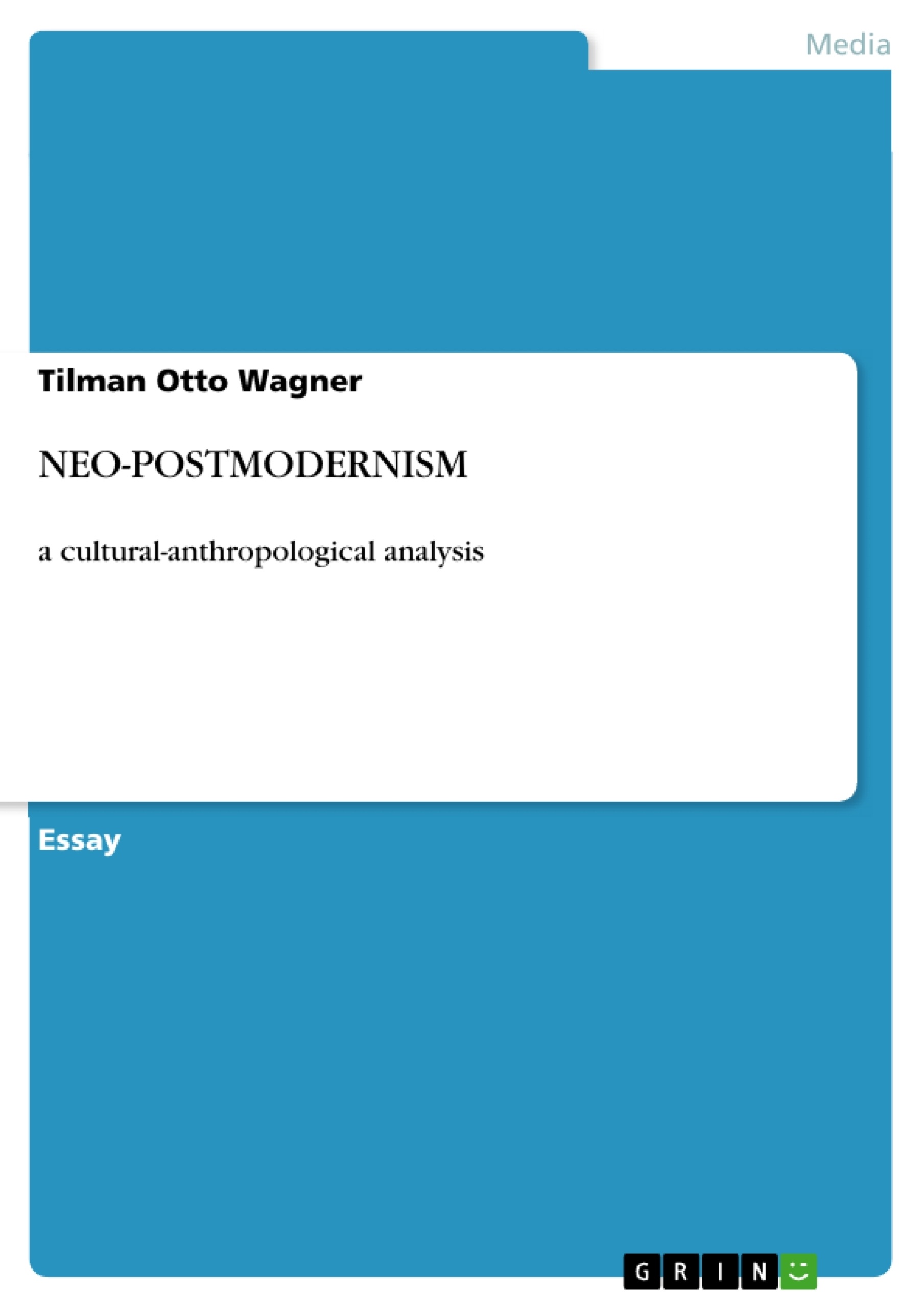A cultural-anthropological analysis of the art world in the third millenium. Avant-garde approach to what we call NEO-POSTMODERNISM from a scientific point of view. Art criticism on film, literature, fine arts, drama and philosophy. The 21st century has found its cultural way by creating a new form of art: NEO-POSTMODERNISM.
Table of Contents
- Neo-Postmodernism: A Cultural-Anthropological Analysis
- The Stigmatization of a Moral Idea and a New Perception of Culture
- A Shift Towards Anthropological Discourses
- Post-Colonial Redefinition and Prophetic Knowledge
- Logocentric and Ethnocentric Development
- Defining the Present Art Theoretical Approach
- From Cinematographic Revolution to the Obliteration of Mimetic Mechanisms
- The Term “Neo-postmodernism/neo-postmodern” in the History of Discourse
- Modernism's Reverse Engineering of the Secret
- Changes in the Perception and Reception of Art
- The Phallocratic Background of Curators and Art Critics
- The Ethnocentric Approach of Neoliberal Subjectivity
- Neo-Postmodernism and Modern Secularization
- The Conclusion of Natural Sciences in the 1960s
- Art and Science as Diametrical Opposites
- The Substantial Strategy of Neo-Postmodernism
- Aesthetic Disasters in Fine Art and Literature
- Simulated Reality and Cultural Atavism
Objectives and Key Themes
This essay aims to precisely define the current art theoretical approach to the aesthetic-ideological measures of the 20th century, considering their sociocultural implications in the digital age. It examines the shift towards anthropological discourses and the impact of technological advancements on art production and reception.
- The evolution of art and its relationship to culture and civilization.
- The interplay between modernism, postmodernism, and neo-postmodernism.
- The influence of technological advancements on artistic creation and reception.
- The role of the artist, curator, and critic in shaping cultural understanding.
- The deconstruction of traditional dualisms and the search for new methods of thinking and working.
Chapter Summaries
The early chapters explore the emergence of neo-postmodernism as a response to postmodernism, analyzing its roots in pre-Christian aesthetics and mythology. Subsequent chapters discuss the impact of post-colonial perspectives on art history, the shift from logocentric to anthropological discourses, and the changing role of the artist in a technologically advanced world. The text also examines the influence of psychoanalysis and mysticism on artistic creation and reception, as well as the phallocratic biases within the art world.
Further sections delve into the limitations of empirical judgment in the context of art and science, highlighting the need to bridge the gap between these fields. The essay also addresses the challenges posed by the simulated virtual reality and the persistence of cultural atavism in contemporary thought.
Keywords
Neo-postmodernism, cultural anthropology, art history, postmodernism, modernism, technology, art production, art reception, artist, curator, critic, post-colonialism, anthropological discourse, digital revolution, secularization, empirical judgment, simulated reality.
- Quote paper
- Tilman Otto Wagner (Author), 2011, NEO-POSTMODERNISM, Munich, GRIN Verlag, https://www.grin.com/document/182722




